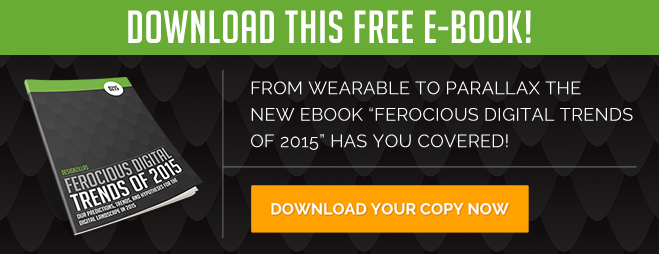
When it comes to building a strong brand, no matter what your industry, every company’s key to success starts with stellar content and equally stellar design. Whether you’re creating a website, infographic, print ad, email campaign, blog post, social media account, etc., there’s always a need for some degree of both parts.
But as with many companies, individual schedules often get bogged down with tasks, meetings, and strategy planning, putting time for Content and Design to collaborate, plan, and lay out the groundwork on the back burner. Or they simply get frustrated with the whole process because both teams haven’t communicated properly about the project specs. So how do we still ensure those stellar results we want so desperately?

Even with limited time and other related restrictions, there are still many ways for both parties to create and maintain a happy, healthy and long-lasting relationship when creating projects. Here are seven first steps to help set yourselves up for success:
1) Brainstorm together.
No matter what platform you’re creating content and design for — whether it be a website, an e-book, a print ad, etc. — the initial brainstorming session tends to bring up the age-old “chicken or the egg” debate. Do we start the content creation or the design first?
While there are many arguments for both sides, that’s not what’s most important to think about in this stage of the game. What’s important is to start generating concepts and spinning ideas off each other as a team — concepts and ideas that are creative, user- or viewer-friendly, and realistic to execute within your timeframe or budget.
If limited time for in-person meetings is one of your hindrances, write out your ideas and send them over via email. Or, if you share the same office space, sketch it all out and old-school paper airplane it over to the other team’s room. That would definitely be the start to an awesome partnership.
2) Don’t get married to any one idea.
Let’s admit it: we’ve all done it. Whether planning a social event, completing a college project, or organizing a large-scale business plan, we’ve all had that one epiphany idea that we were 100% sure would move people to tears when they heard about it. Sometimes these ideas really are as ingenious as we know they are in our heads, and other times they’re better left forgotten.
But even the ingenious ones that blow everyone’s socks off have the chance of being unrealistic, out of the budget or not within the brand guidelines. When that occurs on either side of the design-content spectrum, it’s essential to remember that marrying any one idea can be harmful to the project’s overall purpose and success.
Many of us know that user experience (UX) is “the new black” in the marketing arena, and if you’re in it for anything else, it’s just simply a fashion faux pas. Deterring from a user-centric focus – whether from the designers or the content developers – for the sake of one “great” idea could result in a poor user experience and potentially the loss of a valuable customer or lead.
3) Provide feedback, not criticism.
You’re good at what you do. That’s why you do it. What’s easy to forget sometimes though is that someone else is good at what they do, too. Designers are not content developers and content developers are not designers.
And while feedback is important — we all need it to grow, learn and succeed in life — if it’s nothing but opinion-based, subjective criticism that is all but constructive for the other person, there’s no value in that viewpoint.
In a Huffington Post blog article by Diane Gottsman, “Business Etiquette: 5 Tips to Turning Negative Feedback Into Constructive Criticism”, five great ways to keep criticism as helpful as possible are brought to light, touching on focusing your feedback on the action at hand rather than on the individual; being specific; providing assistance if needed; and more. This is a great way to help the other person get a different perspective on their work without feeling like they’re being attacked.
4) Start learning your partner’s native tongue.
A content developer probably wouldn’t be able to tell you the first thing about parallax scrolling, in the same way that a Web designer probably wouldn’t be able to tell you what a past participle is. This goes back to what we mentioned in the previous tip, where people are good at what they do for a reason. But that doesn’t mean that there’s no room for communication among the language barrier.
If you’re a content developer:
- Learn a little about coding; there are many free “crash course” resources that will help with understanding the subject matter, even if from a helicopter point of view
- View a short tutorial about design basics; you’d be surprised at how knowing some best practices for layouts, typography, white space, etc. can benefit you when creating content
- Watch a designer in action; take note of some common first steps a designer takes and see how you could apply those to your content
If you’re a designer:
- Read some stellar content; check out some examples of content written on Web pages, infographics, etc. to get an idea of what the copy might look like in your design
- Consider where specific content should go in your design; especially for website content, make sure you have a good understanding for what content is most important and where it would be most helpful to the viewer in the navigation menu; if there’s an opportunity to build out more original content (i.e. blogs, e-books, etc.), chances are the content developer is going to generate a lot of copy for those sections, so they should be very visible
- Watch a content developer in action; notice what he/she does frequently with copy in terms of length and placement
- The key here is to accept your individual areas of expertise, but to also challenge yourself to understand your partner’s everyday lingo.
5) Do your job with the other’s job in mind.
Depending on your company’s structure, the project might start with one team before another. It might be one company’s best practice to have the design done prior to content because a client may prefer for the site to be more visually appealing than informational. Or vice versa.
Ideally, the more interaction between teams, the better. But no matter what structure you fall in, you should be prepared to always have the other team’s work in mind while doing yours.
If you’re in a position where the content must come first, make sure the content generated is organized in a way that can be easily designed around it. Don’t make content too heavy if it isn’t necessary – be clear and to the point where possible. If you’re in a position where the design must come first, be sure that the structure is centered around creating a positive user experience, with practical places for content to be placed.
6) Work in tandem to fix problems.
Uh-oh. You’ve run into some unexpected issues while putting everything together. Maybe your website design doesn’t match the format of the content structure. Maybe your content is too lengthy for your print design. Maybe both are great separately, but not combined. Now what?
If your first thought was either to run and hide, or start playing the blame game, you should think again. Fixing problems can be as easy as:
- Pushing away the urge to get defensive about your work
- Asking questions to the other party about the issues you’re running into
- Listening and really understanding the other party’s questions or concerns
- Answering the other party’s questions with as much detail and explanation as possible
- Offering a solution (or two) to a problem the other might be facing
- Being prepared to adjust your work to better the project as a whole
- Remembering to look at the entire picture when making adjustments
Additionally, if you’re creating a project for a client or for a major stakeholder in your company, be aware that your ideas or work could get a nod of disapproval at any time… and there’s not a whole lot you can do about it.
7) Understand that you both have the same end goal.
Google is a star example of this. All of the changes, the algorithm updates, the ever-shifting ranking factors, etc. – all of it is to give their users the best possible experience. That’s what should always be in the back of your mind when creating any material that includes both content and design: user experience.
If both parties remember that it’s not about each other, but rather the end user, you might find that you both have a lot more to agree on than you thought.
![]()

